World Famous Architects Who Shaped the World of Art with the Eye-Catching Masterpieces They Left Beh
When we say art, civilization comes to mind. The buildings we see around us both make our lives easier and are an artistic expression of culture. Architects not only keep the civilization we live in alive, but also beautify it. In this content, we have listed world-famous architects who shaped art with their works. Details continue in the content!
World-famous architects have made their art known from past to present; At times, they even shook the world with their innovative style.

As Frank Lloyd said: 'Architecture is the mother of all arts. 'We cannot have the spirit of our own civilization without our own architecture.'
Let's take a look at all this architecture and the architects who shape the world!
16. Michelangelo (1475-1564)
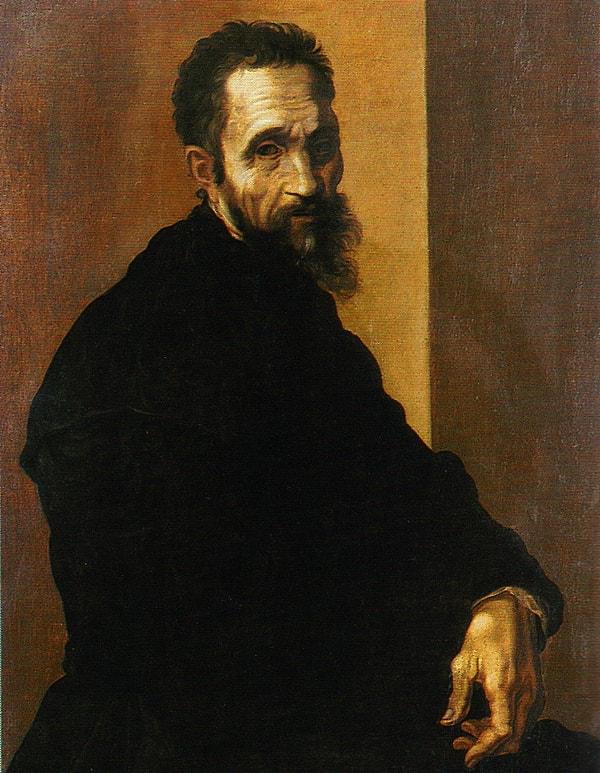 Although we know him for his painting talent, Michelangelo was also a talented architect. He was among the personalities who broke away from classical styles and challenged traditional expectations. In 1523, Michelangelo was commissioned to design a two-story library on top of the monastery.
Although we know him for his painting talent, Michelangelo was also a talented architect. He was among the personalities who broke away from classical styles and challenged traditional expectations. In 1523, Michelangelo was commissioned to design a two-story library on top of the monastery.
Michelangelo used radical principles and broke the rules of classical art in the design of Italy's Laurentin Library.
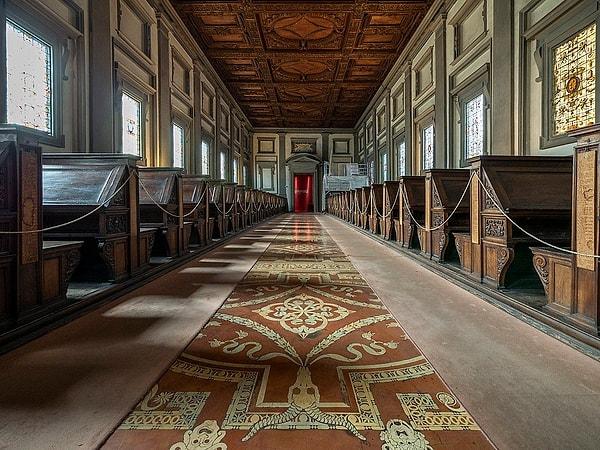 For example, he used traditionally used elements only as decoration. Michelangelo's most famous contribution to architecture is probably the dome of the Vatican's St. Peter's Basilica. It stands as one of the most recognized landmarks in the world. However, Michelangelo could not complete the architecture of the dome because he died early.
For example, he used traditionally used elements only as decoration. Michelangelo's most famous contribution to architecture is probably the dome of the Vatican's St. Peter's Basilica. It stands as one of the most recognized landmarks in the world. However, Michelangelo could not complete the architecture of the dome because he died early.
15. Mimar Sinan (1486-1588)
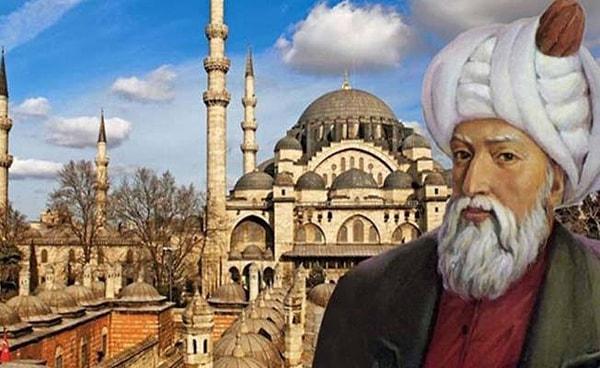 Mimar Sinan pioneered the design of more than three hundred structures in the 16th century, mostly mosques , palaces, schools and many other buildings, and he also perfected the design of the domed mosque, an important symbol of both political power and the Islamic faith in the Ottoman Empire.
Mimar Sinan pioneered the design of more than three hundred structures in the 16th century, mostly mosques , palaces, schools and many other buildings, and he also perfected the design of the domed mosque, an important symbol of both political power and the Islamic faith in the Ottoman Empire.
Among the masterpieces of Mimar Sinan are the Edirne Selimiye Mosque in our country and the Süleymaniye Mosque in Istanbul.
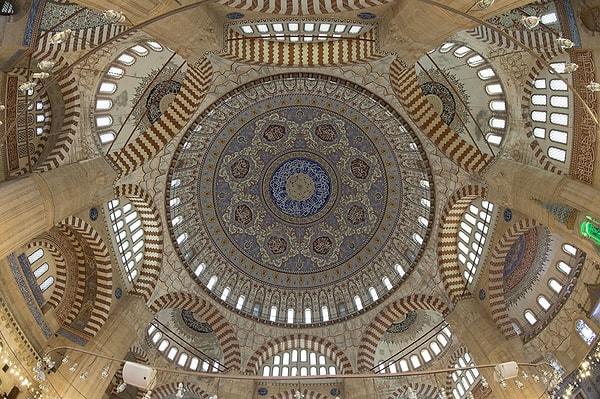 After being drafted into the Janissary Corps, he rose to the rank of artillery chief, first demonstrating his talent in architecture by designing fortifications and bridges. In 1538, he became the Chief of Imperial Architects and started building mosques.
After being drafted into the Janissary Corps, he rose to the rank of artillery chief, first demonstrating his talent in architecture by designing fortifications and bridges. In 1538, he became the Chief of Imperial Architects and started building mosques.
14. Imhotep (2667-2648 BC)
 Although he was a public figure, he was appointed as the chief architect of Pharaoh Djoser of Egypt's Third Dynasty, and is known to be one of the first architects in history.
Although he was a public figure, he was appointed as the chief architect of Pharaoh Djoser of Egypt's Third Dynasty, and is known to be one of the first architects in history.
Imhotep is known for building the Sakkara Pyramids.
 Although earlier pyramids were built of clay and brick, Imhotep used stone blocks and covered the exteriors with limestone. This design of Imhotep also influenced later tomb structures and inspired structures such as the Great Pyramid of Giza.
Although earlier pyramids were built of clay and brick, Imhotep used stone blocks and covered the exteriors with limestone. This design of Imhotep also influenced later tomb structures and inspired structures such as the Great Pyramid of Giza.
13. Sir Christopher Wren (1632-1723)
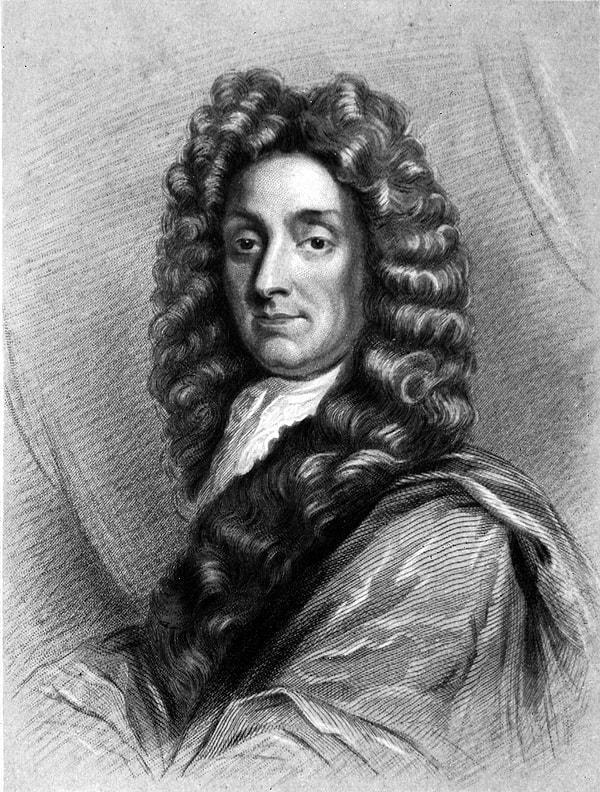 Wren was an architect far, far ahead of his time. In addition to being a professor of astronomy at Oxford, he was also very interested in architecture. In the 1660s he was commissioned to design the Sheldon Theater in Oxford and visited Paris to study its baroque architecture.
Wren was an architect far, far ahead of his time. In addition to being a professor of astronomy at Oxford, he was also very interested in architecture. In the 1660s he was commissioned to design the Sheldon Theater in Oxford and visited Paris to study its baroque architecture.
Wren spearheaded the design of St. Paul's Cathedral as well as more than fifty other designs.
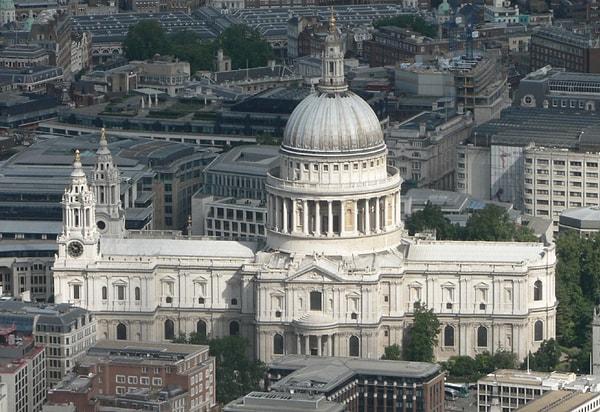 Other buildings designed by Wren included the Royal Naval College, Greenwich Hospital and the façade of Hampton Court Palace.
Other buildings designed by Wren included the Royal Naval College, Greenwich Hospital and the façade of Hampton Court Palace.
12. Louis Sullivan (1856-1924)
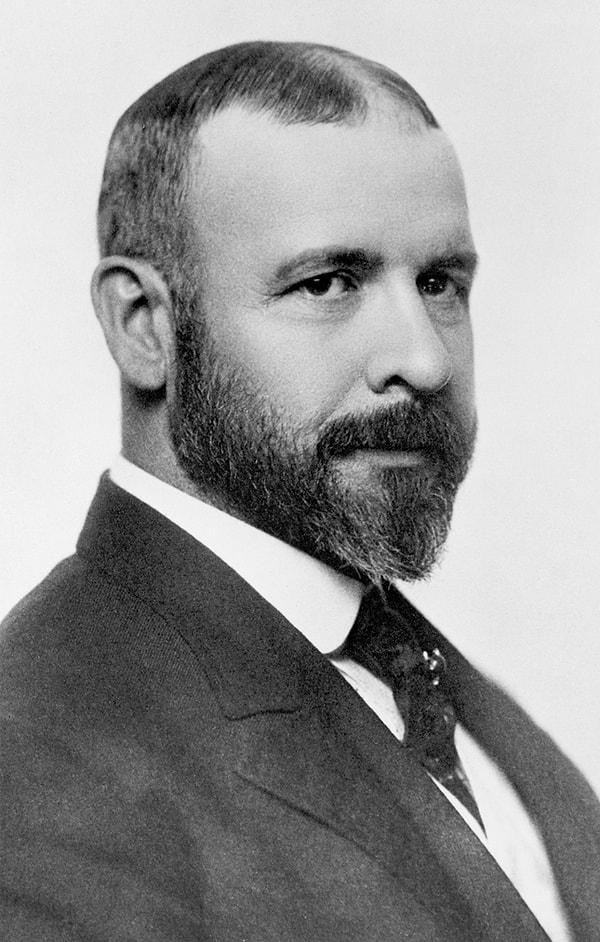 After a fire in Chicago in 1871, Sullivan created many architectural structures using destroyed buildings. When he was younger, he also worked in the offices of Frank Furness and William Le Baron Jenny. He was only 24 years old when he became a partner in Dankmar Adler's firm in 1881.
After a fire in Chicago in 1871, Sullivan created many architectural structures using destroyed buildings. When he was younger, he also worked in the offices of Frank Furness and William Le Baron Jenny. He was only 24 years old when he became a partner in Dankmar Adler's firm in 1881.
One of the first skyscrapers, the Guarantor Building in Buffalo, New York, is considered one of Sullivan's early works.
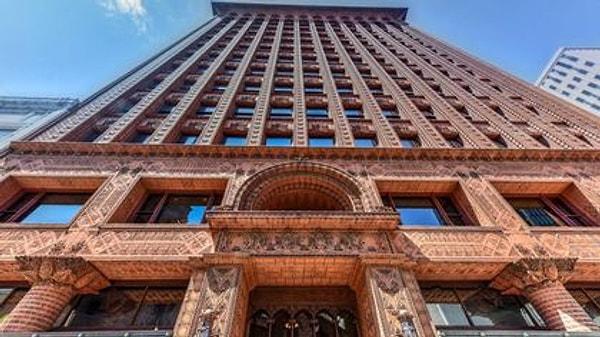 The concept of the 'skyscraper' emerged when other architects, such as Jenney , began using steel to build taller structures. Since Sullivan was open to innovations, he also reflected this in his skyscraper constructions, and for this reason he is known as the 'Father of Skyscrapers'.
The concept of the 'skyscraper' emerged when other architects, such as Jenney , began using steel to build taller structures. Since Sullivan was open to innovations, he also reflected this in his skyscraper constructions, and for this reason he is known as the 'Father of Skyscrapers'.
11. Le Corbusier (1887-1965)
 Le Corbusier adopted functionalism by rejecting excessively non-structural decorations and generally preferred modern concrete and steel materials in his buildings. Corbusier, who came to the fore especially with his house designs, also played a major role in the development of the architectural style.
Le Corbusier adopted functionalism by rejecting excessively non-structural decorations and generally preferred modern concrete and steel materials in his buildings. Corbusier, who came to the fore especially with his house designs, also played a major role in the development of the architectural style.
In his designs, Le Corbusier used free-flowing floor plans as well as column support that included walls that were independent of the structure.
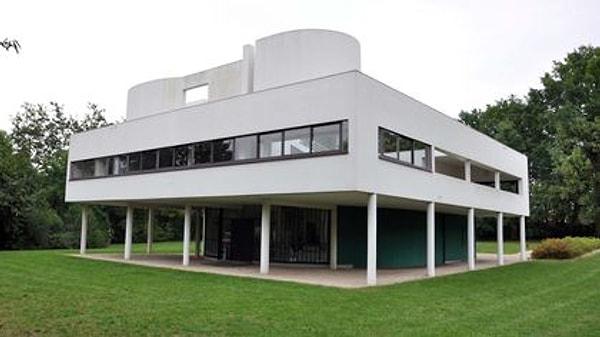 He placed his buildings on columns, partly because he believed they were conducive to a hygienic lifestyle. And finally, building designs included flat roofs that encompassed gardens.
He placed his buildings on columns, partly because he believed they were conducive to a hygienic lifestyle. And finally, building designs included flat roofs that encompassed gardens.
10. Antoni Gaudi (1852-1926)
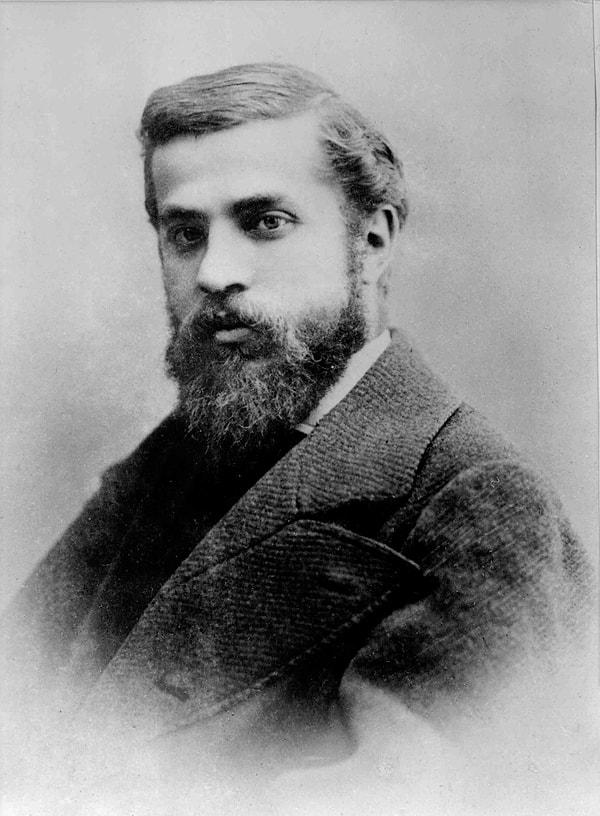 Spanish architect Antoni Gaudi developed a distinctive style. Born in the Catalonia region of Spain in 1852 , Gaudi was a Catholic who believed that he could glorify God by taking his inspiration from nature, God's creation.
Spanish architect Antoni Gaudi developed a distinctive style. Born in the Catalonia region of Spain in 1852 , Gaudi was a Catholic who believed that he could glorify God by taking his inspiration from nature, God's creation.
Taking his cues from nature, Gaudi preferred curves instead of straight lines, various textures and vibrant colors.
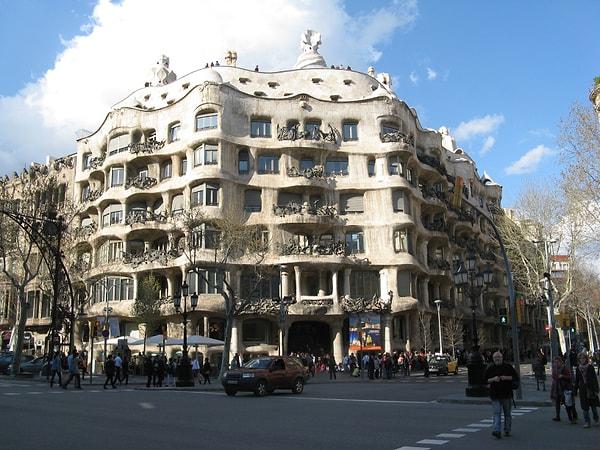 The Sagrada Familia Cathedral in Barcelona is known as his most famous work. However, the cathedral was unfinished by the time of his death in 1926, and although work continued, the cathedral still remains unfinished to this day.
The Sagrada Familia Cathedral in Barcelona is known as his most famous work. However, the cathedral was unfinished by the time of his death in 1926, and although work continued, the cathedral still remains unfinished to this day.
9. Ludgis Mies van der Rohe (1886-1969)
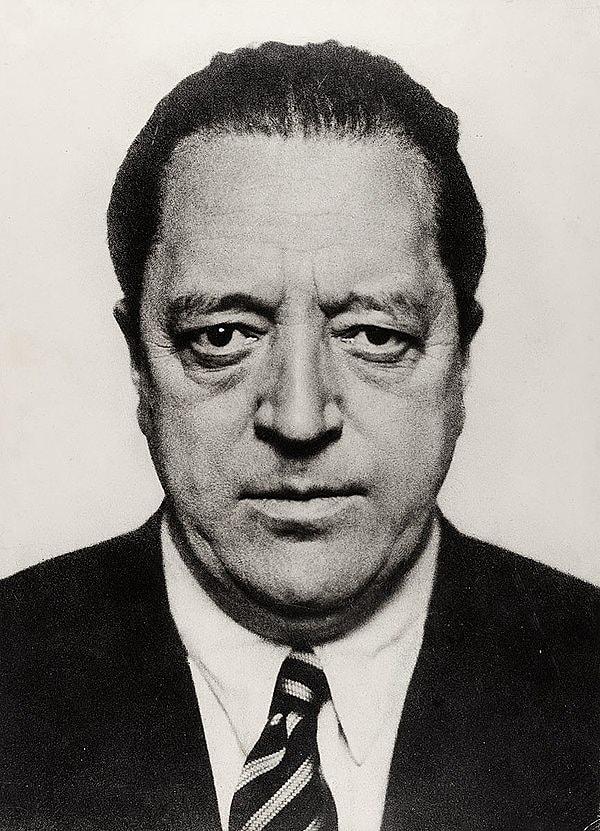 Ludwig Mies van der Rohe, born in Germany in 1886 , was one of the modern architects who made the transition from the more ornate, traditional styles of the 19th century to the sleek, minimalist styles of the 20th century.
Ludwig Mies van der Rohe, born in Germany in 1886 , was one of the modern architects who made the transition from the more ornate, traditional styles of the 19th century to the sleek, minimalist styles of the 20th century.
Emphasizing the importance of conciseness, Rohe attaches importance to simplicity and elegance without excessive ornamentation.
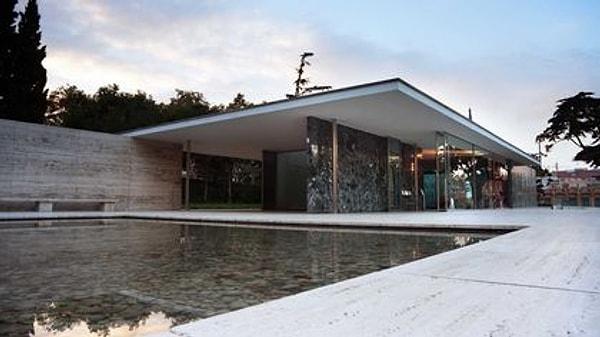 While in the United States , Mies designed several well-known skyscrapers, including the Seagram Building in New York and the Lake Shore Drive apartments in Chicago. He also included steel, which we often encounter while trying to reflect the Industrial Age in building designs.
While in the United States , Mies designed several well-known skyscrapers, including the Seagram Building in New York and the Lake Shore Drive apartments in Chicago. He also included steel, which we often encounter while trying to reflect the Industrial Age in building designs.
8. Ieoh Ming Pei (1917-2019)
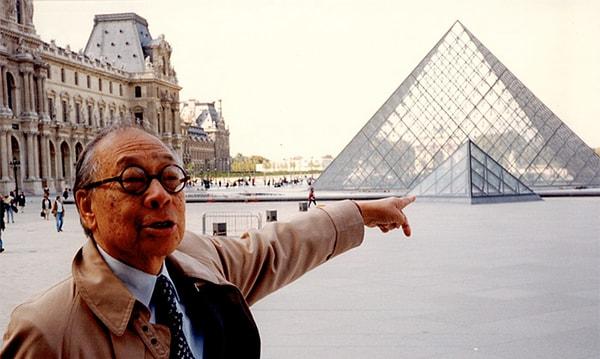 Born in China in 1917 , Ieoh Ming Pei came to the United States in the 1930s to study architecture. However, when he graduated, II. He was unable to return to China due to the outbreak of World War II. Instead, he remained in the United States and became a citizen there in 1954.
Born in China in 1917 , Ieoh Ming Pei came to the United States in the 1930s to study architecture. However, when he graduated, II. He was unable to return to China due to the outbreak of World War II. Instead, he remained in the United States and became a citizen there in 1954.
Pei tried to bring together modernism and traditionalism in his work.
 In the 1960s, Pei was selected to design the terminal at John F. Kennedy International Airport and gained international fame in 1974 when he designed the East Building of the National Gallery of Art in Washington, DC. He is also known for the glass pyramid structure in the courtyard of the Louvre Museum in Paris, built in 1989.
In the 1960s, Pei was selected to design the terminal at John F. Kennedy International Airport and gained international fame in 1974 when he designed the East Building of the National Gallery of Art in Washington, DC. He is also known for the glass pyramid structure in the courtyard of the Louvre Museum in Paris, built in 1989.
7. Norman Foster (1935-)
 Foster was born in Manchester, England , in 1935 and received a master's degree in architecture from the University of Manchester and Yale University. Before founding the firm Foster + Partners in 1967, he worked with his wife Wendy Foster at Team 4, a firm they founded with Richard and Su Rogers.
Foster was born in Manchester, England , in 1935 and received a master's degree in architecture from the University of Manchester and Yale University. Before founding the firm Foster + Partners in 1967, he worked with his wife Wendy Foster at Team 4, a firm they founded with Richard and Su Rogers.
Foster played a major role in the design of buildings around the world, such as the Millau Viaduct in southern France, which he designed with engineer Michel Virlogeux.
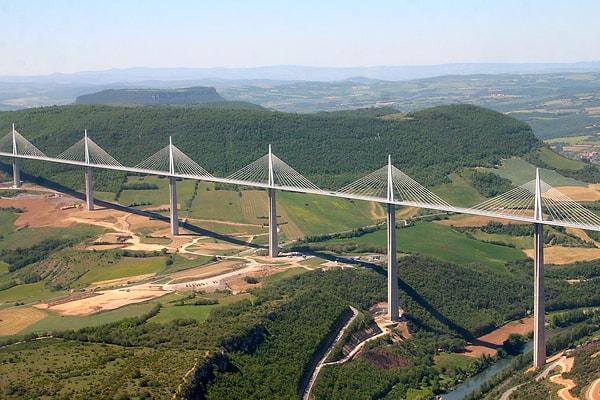 But visitors to London can also witness Foster's local projects, such as the British Museum's Great Court, the Millennium Bridge, London City Hall and the Gherkin .
But visitors to London can also witness Foster's local projects, such as the British Museum's Great Court, the Millennium Bridge, London City Hall and the Gherkin .
6. Arata Isozaki (1931-)
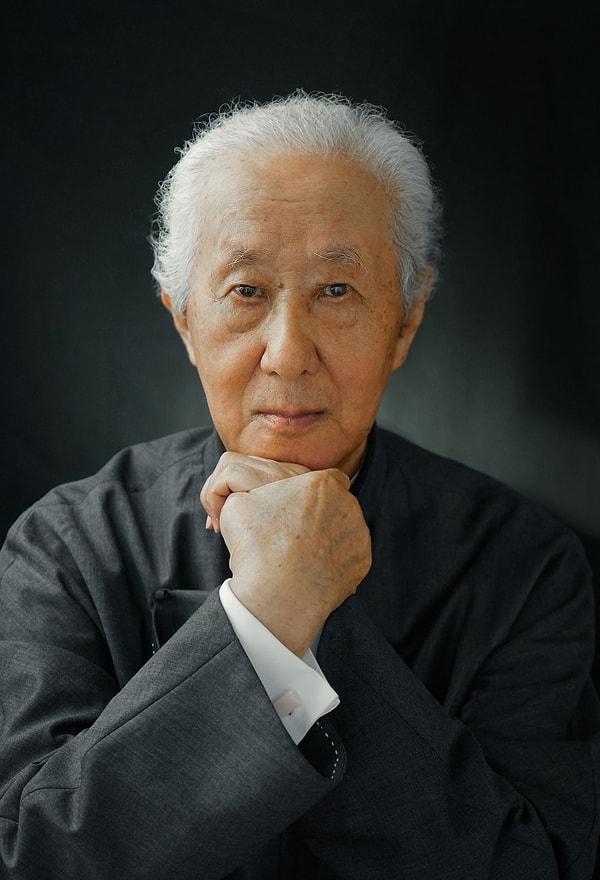 Japanese architect Arata Isozaki was born in Kyushu in 1931. II. He was moved by the destruction he saw during World War II and studied architecture at the University of Tokyo, focusing on rebuilding damaged cities.
Japanese architect Arata Isozaki was born in Kyushu in 1931. II. He was moved by the destruction he saw during World War II and studied architecture at the University of Tokyo, focusing on rebuilding damaged cities.
Although Isozaki's projects total more than a hundred, he was deemed worthy of the 2019 Pritzker Architecture Prize for his significant contributions to architecture.
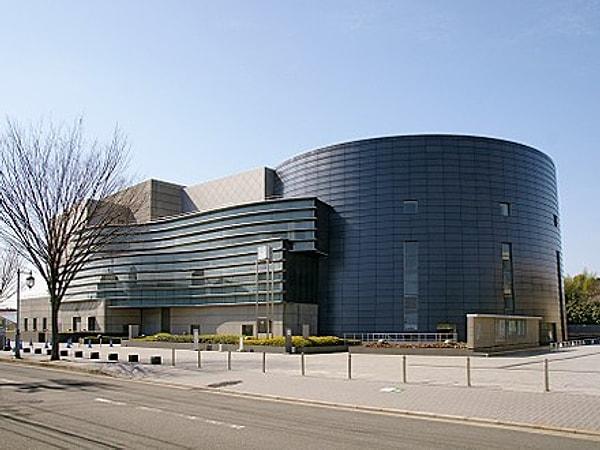 Over the next few decades, Isozaki's international projects included the Palau Sant Jordi in Barcelona ; Team Disney Building in Orlando, Florida ; Qatar National Convention Center in Doha ; There was the Shanghai Symphony Hall in China and more.
Over the next few decades, Isozaki's international projects included the Palau Sant Jordi in Barcelona ; Team Disney Building in Orlando, Florida ; Qatar National Convention Center in Doha ; There was the Shanghai Symphony Hall in China and more.
5. Eero Saarinen (1910-1961)
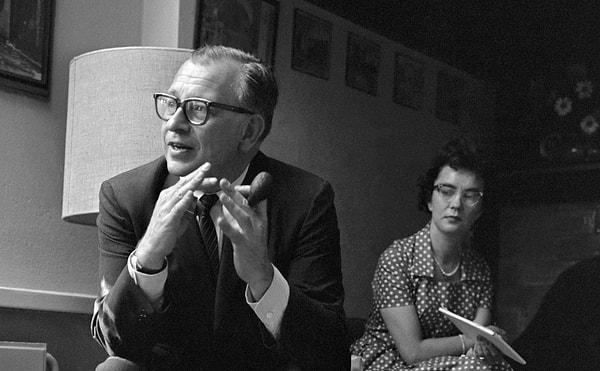 Born in 1910 in Kirkkonummi , Finland , as the son of architect Eliel Saarinen and sculptor Loja Gesellius, Saarinen studied sculpture in Paris and then architecture at Yale University. He taught at the Cranbrook Academy of Art, collaborated with the likes of Charles and Ray Eames, and participated in World War II . He worked with the Office of Strategic Services (OSS) during World War II.
Born in 1910 in Kirkkonummi , Finland , as the son of architect Eliel Saarinen and sculptor Loja Gesellius, Saarinen studied sculpture in Paris and then architecture at Yale University. He taught at the Cranbrook Academy of Art, collaborated with the likes of Charles and Ray Eames, and participated in World War II . He worked with the Office of Strategic Services (OSS) during World War II.
Saarinen's style was characterized by the then-new "curvilinear and organically inspired sculptural forms".
 In addition to his work designing furniture for Knoll, such as the Womb chair and the Tulip table, Saarinen also works for St. He has also pioneered iconic structures such as the Gateway Arch in St. Louis and the General Motors Technical Center in Warren, Michigan, which was his first solo project.
In addition to his work designing furniture for Knoll, such as the Womb chair and the Tulip table, Saarinen also works for St. He has also pioneered iconic structures such as the Gateway Arch in St. Louis and the General Motors Technical Center in Warren, Michigan, which was his first solo project.
4. Zaha Hadid (1950-2016)
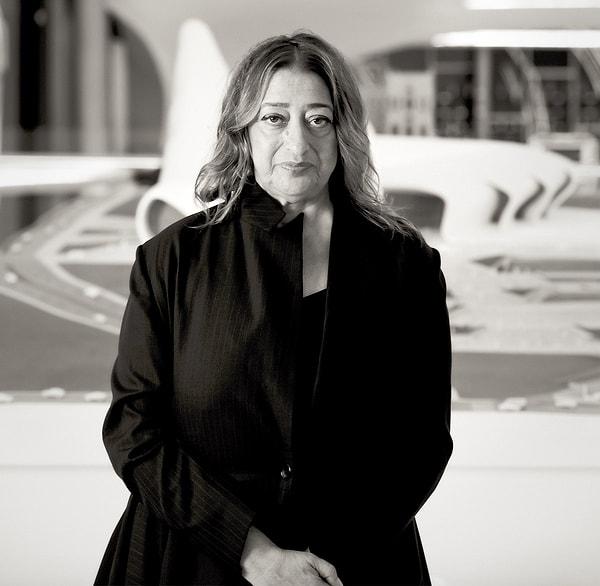 Architect Zaha Hadid, known for her projects with shapes that defy physics, was a mathematics student before winning the Diploma Award from the Architectural Association (AA) in London in 1977 . He was born in Baghdad in 1950, during a period of prosperity and modernization in Iraq, and wanted to be an architect until the age of 11 . After receiving her AA diploma, Hadid became a partner at the Metropolitan Office of Architecture (OMA) in Rotterdam, the Netherlands , and then founded the firm Zaha Hadid Architects in London in 1980.
Architect Zaha Hadid, known for her projects with shapes that defy physics, was a mathematics student before winning the Diploma Award from the Architectural Association (AA) in London in 1977 . He was born in Baghdad in 1950, during a period of prosperity and modernization in Iraq, and wanted to be an architect until the age of 11 . After receiving her AA diploma, Hadid became a partner at the Metropolitan Office of Architecture (OMA) in Rotterdam, the Netherlands , and then founded the firm Zaha Hadid Architects in London in 1980.
He designed the inaugural Serpentine Gallery Pavilion in 2000 and has reflected his imagination in buildings around the world.
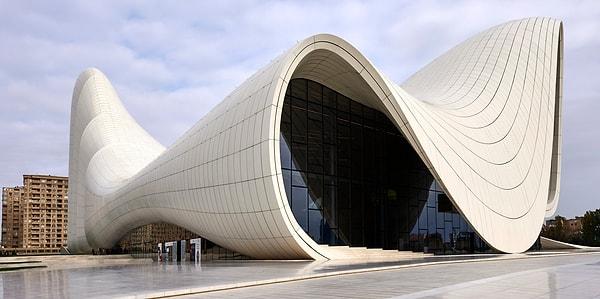 For her contributions to architecture, Hadid won the Pritzker in 2004, becoming the first female architect to do so. She died in 2016, when she was only 65 years old.
For her contributions to architecture, Hadid won the Pritzker in 2004, becoming the first female architect to do so. She died in 2016, when she was only 65 years old.
3. Frank Gehry (1929-)
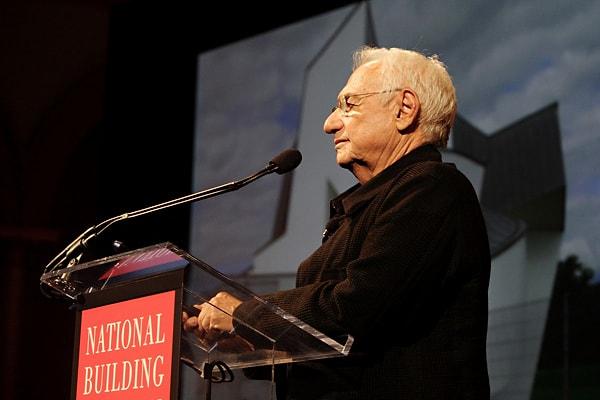 Born in Canada in 1929 and moving to the United States in his teens , Frank Gehry became a leading architect in postmodern architectural styles. In contrast to the rigid, utilitarian tendencies of the international style, Gehry explored irregular forms and radical, expressive shapes.
Born in Canada in 1929 and moving to the United States in his teens , Frank Gehry became a leading architect in postmodern architectural styles. In contrast to the rigid, utilitarian tendencies of the international style, Gehry explored irregular forms and radical, expressive shapes.
The Guggenheim Museum is one of Frank Gehry's most famous works.
 cms.guggenheim-bilbao.eus
cms.guggenheim-bilbao.eus
It began to attract attention in the 1960s and 1970s, when a line of furniture made from corrugated cardboard suddenly became popular. By the 1990s, he developed his style and gained fame in this field by designing organic, wavy, free-flowing structures.
2. Sir David Adjaye (1966-)
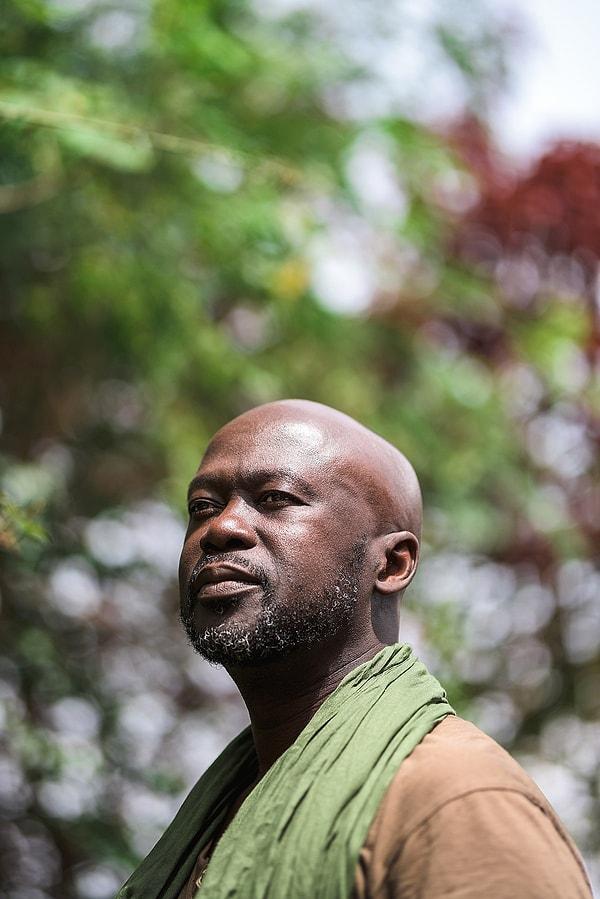 Born in Dar es Salaam , Tanzania , in 1966 , Sir David Adjaye was exposed to many cultures and architectural styles in his youth due to his diplomat father's career. The architect, who later settled in London , received degrees from South Bank University and the Royal College of Art. He documented 54 African cities and published the images as Adjaye Africa Architecture: A Photographic Survey of Metropolitan Architecture .
Born in Dar es Salaam , Tanzania , in 1966 , Sir David Adjaye was exposed to many cultures and architectural styles in his youth due to his diplomat father's career. The architect, who later settled in London , received degrees from South Bank University and the Royal College of Art. He documented 54 African cities and published the images as Adjaye Africa Architecture: A Photographic Survey of Metropolitan Architecture .
Adjaye was inspired by the reasons architecture serves people and promotes egalitarianism due to the inequalities faced by his partially paralyzed brother, Emmanuel.
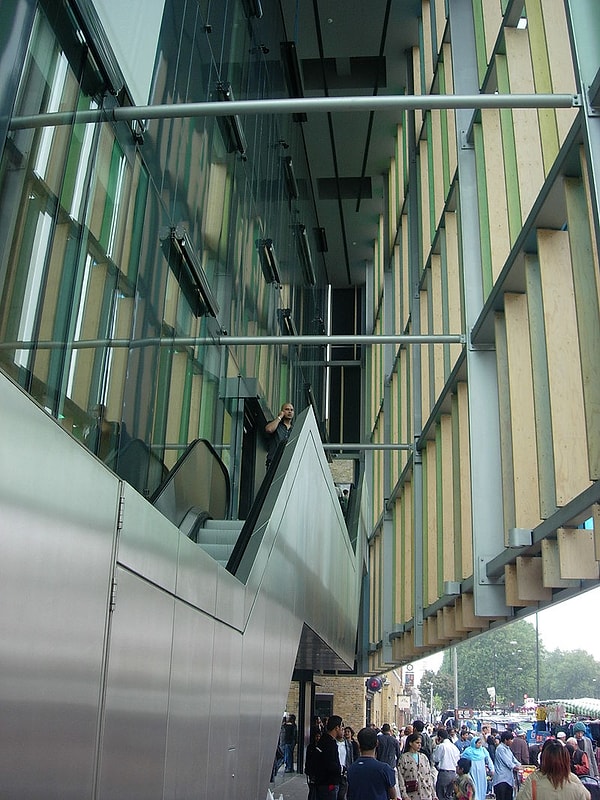 After founding the firm, Adjaye won some panel discussions, including the Ideas Stores public libraries in London and the Museum of Contemporary Art in Denver . He won an international competition for designing the Smithsonian National Museum of African American History and Culture in DC in partnership with Philip Freelon as Freelon Adjaye Bond/Smith Group.
After founding the firm, Adjaye won some panel discussions, including the Ideas Stores public libraries in London and the Museum of Contemporary Art in Denver . He won an international competition for designing the Smithsonian National Museum of African American History and Culture in DC in partnership with Philip Freelon as Freelon Adjaye Bond/Smith Group.
1. Frank Lloyd Wright (1867-1959)
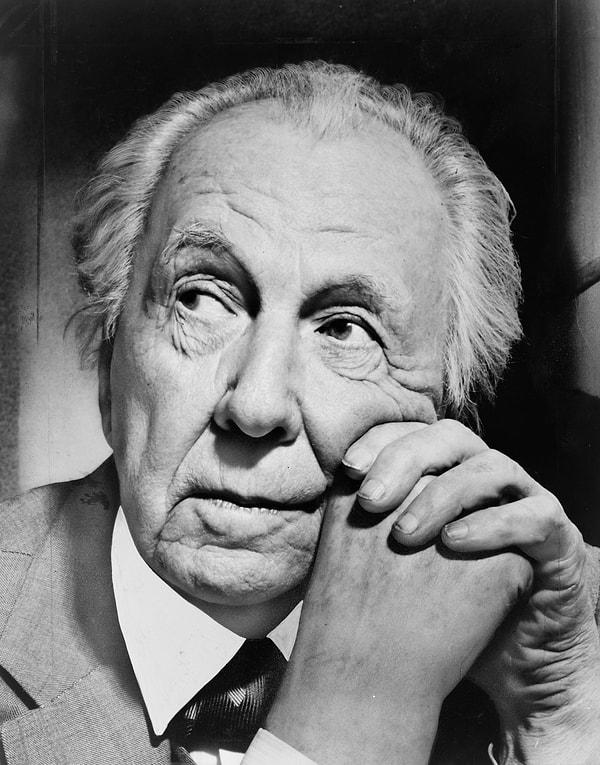 A famous example of Frank's Prairie style house can be seen in the Robie House, built in Chicago in 1910. But Wright took this idea further and promoted the concept of what he called organic architecture. This concept refers to the use of both structure and materials to integrate designs with nature and the environment.
A famous example of Frank's Prairie style house can be seen in the Robie House, built in Chicago in 1910. But Wright took this idea further and promoted the concept of what he called organic architecture. This concept refers to the use of both structure and materials to integrate designs with nature and the environment.
Although his career was shaken by some family events, everything rose from the ashes with his return to architecture.
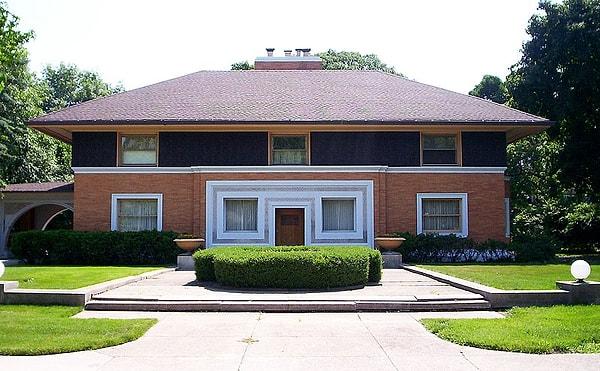 In 1935 he designed Fallingwater, built over a waterfall in southwestern Pennsylvania. Wright also pioneered the innovative design of the Guggenheim Museum in New York .
In 1935 he designed Fallingwater, built over a waterfall in southwestern Pennsylvania. Wright also pioneered the innovative design of the Guggenheim Museum in New York .




























